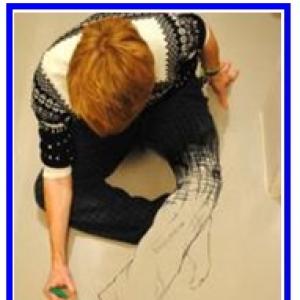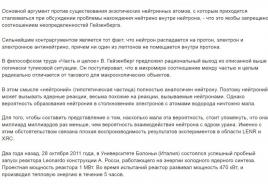Pierrefonds castle on france map. Pierrefonds castle (France): description, history, reviews
On the outskirts of the Compiegne Forest stands the fairytale castle of Pierrefonds (Chateau de Pierrefonds), which became the prototype of Disney palaces. His name keeps the memory of the noble family Pierrefonds - the founders and first owners of the fortress. Its walls remember the Duke Louis of Orleans, an ardent opponent of Burgundy. But the present appearance of the castle is a monument to Napoleon III and his architect Viola le Duc. Although Le Duc is remembered by Notre-Dame-de-Paris, Saint-Denis and other iconic architectural monuments of Europe.
From Pierrefons to Napoleon III
The fortress on a hill in the thicket of the Compiegne forest was built in the XII century by the lord Pierrefonds of Chierzi. It was a fortification typical of the Middle Ages, in which the local feudal lord planned his raids and protected the loot from zealous neighbors. A little later, the fortress became the royal property. And in the XIV century - part of the possessions of the Duke of Orleans, who began to rebuild the old fortress, planning to make the new castle his residence, fortunately, Paris is not far away. In the 17th century, the castle belonged to the brother of Gabriella d'Estre, the favorite of Henry of Navarre. It was his participation in the party of the Prince of Condé, the enemy of the king, that led to the fact that the castle was destroyed by order of Cardinal Richelieu. True, the powerful walls survived, only broke the roof and tore down the fortifications. So the castle stood until the 19th century, until it caught the eye of Bonaparte. But the wars distracted the emperor, and the castle was forgotten again. But Napoleon III, preaching the romance of the Middle Ages, decided to restore some of the old fortresses, and, thanks to Prosper Mérimée, turned his gaze to Pierrefonds (according to another version, Empress Eugenie liked Pierrefonds very much).
The restoration of the castle was taken over by the architect Viollet le Duc, a specialist in fortifications of the Middle Ages. But he very peculiarly approached restoration work: he did not restore the exact appearance of the building, but altered it at his own discretion, stylizing it to resemble the Gothic and the Middle Ages.
Fairytale castle
Modern Pierrefonds is a synthesis of historically accurate form, modern building technologies and eclectic interior design that anticipated modernity. The outer walls are an irregular rectangle, with 12 defense towers built into them. One of them houses a chapel, skillfully stylized in the Gothic style. The castle's donjon is included in the general defense system. The courtyard behind its richly decorated facades is called the Yard of Wonders. It contains a well with a holy spring and a statue of Louis Orleans.
The interior of the rooms does not have a uniform style. From the halls stylized as the Middle Ages, you can get to the Empress's bedroom or the Emperor's study, decorated in the style of the Second Empire. The Knights' Hall and the Hall of Fair Ladies are the most impressive. Pierrefonds dungeons are used to display the tombstones of famous personalities.
Pierrefonds today
Currently, 10 rooms and the underground Hall of Gizants are available for inspection. Within the walls of the castle are the Fortification Museum, an exhibition of wood carvings belonging to the hand of Viollet le Duc, and a collection of metal figurines from the Monduis dynasty. Moreover, the Monduis collection is not copies, but duplicates of genuine things.

It promises to be interesting, intense and full of intrigue. Yes, yes, everything is exactly so, because the matter goes into distant history and unravels the tangle of secrets that were woven around the crown of the French Empire. Indulge in the pleasure of visiting a neo-gothic castle Pierrefonds and a beautiful medieval town Compiegne after all, during the excursion, you will get acquainted with the amazing city and castle, which is associated primarily with the Bonaparte dynasty. Learn interesting Facts about the life of Napoleon I and Napoleon III, who lived there and gave luxurious banquets.
Pierrefonds Castle located in the province of Picardy, 75 km from Paris. This 14th century fortress, formerly owned by Louis Orleans, whose seed witnessed the battles Hundred Years War, and he himself was close to Cardinal Richelieu. It was Louis d'Orléans who created a castle that could compare with King Arthur's Camelot itself; it was a real example of a medieval French fortress, but under King Louis XIII it was defeated. It would seem that the history of the castle suffered a fiasco, but no, in 1813 Napoleon I bought it and, unfortunately, did not have time to restore it. In XIX with the light hand of Napoleon III, the castle was restored from ruins by the emperor Viollet-le-Duc, who was a famous restorer of the famous, and the Papal Palace in Lyon. Thanks to him, we can see the current appearance of the Pierrefonds castle.
Our excursion to the Pierrefonds Castle from Paris also provides for a visit to a quiet and cozy city \u200b\u200bof Compiegne, where you can stroll along the medieval streets enjoying its architecture, visit the city's cathedrals and museums, watch the life of the city in the squares and Sunday markets and, of course, taste the local cuisine.
Entrance fee: 7.5 € / person, free for children under 18 years old.

Special offer: For an additional fee, this excursion can be supplemented with a visit to
Excursion route: This tour starts from the clients' hotel, with an accompanying driver or guide. The first we will visit the imperial castle or the castle of the Sleeping Beauty, as the locals call it, which is located 75 km from Paris. Then we will go for a walk in the medieval town Compiegne , where you will examine the facades of old houses, walk along its narrow streets, breathlessly breathe in the flavor of the French hinterland.
* the route of an individual excursion can be adjusted.
The excursion price includes:
transport services (toll roads, parking lots), services of a Russian-speaking guide or an accompanying driver.
The excursion price does not include:
entrance ticket to the castle, personal expenses
Conditions for booking and canceling our services
A gigantic fortress built at the end of the fourteenth century by Louis of Orleans, brother of Charles VI, Pierrefonds Castle was besieged and demolished at the beginning of the seventeenth century by Louis XIII. For almost two centuries, the ruins of the ancient fortress stood in their place, and no one was interested in them. In the late eighteenth and early nineteenth centuries, a nascent romanticism and a renewed interest in national monuments and traces of the past, fully returned interest in Pierrefonds Castle. Painters, painters and engravers have found inspiration in perfect harmony with their thirst for national archeology. In addition, in the midst of the ruins of Pierrefon, Louis-Philippe gave a large banquet on 11 August 1832 in honor of his daughter's marriage to the Belgian emperor Leopold I.
Castle history
Sold in 1798 as national property, bought by Napoleon in 1810. Pierrefonds Castle has been listed historical monuments in 1848. On July 15, 1850, was visited by Prince President Louis Napoleon, a lover of archeology. A few years later, when he became Napoleon III, he wished to restore this castle, which was so close to the imperial residence in Compiegne. Thus, the architect Viollet-le-Duc, through the mediation of Mérimée, was entrusted with the restoration of the medieval castle ruins in 1857.
The first stage of work, from 1858 to 1861, involved only partial restoration of the keep, the large towers and the strengthening of the ruins. Since 1861, this principle of recreating the "picturesque ruins" was abandoned for the sake of the "imperial residence", that is, a resort intended for the entertainment of the courtyard, in this case hunting. From restoration they moved on to reconstruction, to rebuilding medieval architecture. Viollet-le-Duc expressed the synthesis of his concepts in the field of restoration: to restore a building "means to restore it to its full state, which could never exist at the moment," he writes in 1866 in his Explanatory Architectural Dictionary. He "recreated" the castle, which, far from being fancy forgery, is more of a loose interpretation of the medieval period.
Holidays in France at the best beach resorts
The castle forms an irregular quadrangle surrounded by eight large defensive towers, and its appearance matches everything that was to become a fortress of Louis of Orleans. On the other hand, the interior testifies to Viollet-le-Ducay's aesthetic concepts, above all his talent as a decorator. The courtyard, renovated in the late medieval style, already announcing the Renaissance, gives access to the main building and the chapel. The Donjon, not isolated but attached to the main façade, houses the imperial apartments, respecting its medieval function as a reception room for the manor house.
Upstairs, the visit begins with the reception, which was supposed to greet the acquaintances of the Emperor and Empress. Then follows the study, and then the room of Napoleon III and, finally, the same room of Empress Eugenie, which are located in the Julius Caesar tower. In these works, Viollet-le-Duc designed the decoration of carved panels and stencils, where the wealth of figures inspired by medieval bestiaries rivals an abundance of floral motifs. Through this use of the floral line, the stylization of the drawing and the use of strong polychromy, the architect appears here, fifty years ahead, as one of the predecessors of Art Nouveau, so brilliantly illustrated by Guimard or Horta. A recurring symbol, the imperial eagle adorns beams, walls and chimneys, while historic friezes tell the story of the knights of the 14th century.
The large ceremonial hall of the castle, called the "Hall of Knightly Ladies" ("La salle des Preuses"). impresses with its dimensions (50 m long, 9.50 m wide and 12 m high) and rich polychrome decor. Everything here testifies to the splendor of the hall, intended for imperial receptions, and also serves as a refuge for the fine private collection of Napoleon III's armor, which is now kept in the Invalides. At the end of the room, two sets of statues meet: Charlemagne surrounded by paladin princes at the entrance, and a group of nine ladies adorning a monumental fireplace at the other end. Portraying Semiramis and her eight companions, Viollet-le-Ducdal them features of the Empress Eugenie and eight ladies of the court.
The construction cost was over 5 million gold francs, of which 75% was financed from the personal treasury of the Emperor. An unfinished building during the fall of the Second Empire, Pierrefonds Castle never received furniture designed by Viollet-le-Duc. The furniture was created by his son-in-law, the architect Urado, who replaced him after his death in 1879 and took over the work, which was finally completed in 1885.
Pierrefonds Castle
Condemned by many who see it only as a simple theatrical decor, Pierrefonds Castle is controversial. An excellent vision of medieval art, the castle symbolizes the union of science and irrationality, the rigor of archaeological research and legends. A true fairytale castle, with the help of its brilliant creator Viollet-le-Duc, it shows the desire of the Second Empire to reconcile history and modernity.
Chantilly castle
New opportunities and excursions in the castle
The National Monuments Center offers visitors a new tour. This allows you to visit the exhibition "Monduit" to discover the works of lead, and continue in the chapel with a magnificent view of the stained glass windows. This new route allows visitors to distinguish between the periods that Pierrefonds Castle has gone through.
The cultural program offers animation all year round for visitors and especially families: exhibitions, concerts, seminars, shows.
Expert opinion
Knyazeva Victoria
Guide to Paris and France
Ask an expertChildren who wish to explore the museum in a more interesting and fun way can go on a monster hunt through the new “Fairy Menagerie” app, which is available for free on smartphones.
The touch table was funded by the Caisse d'épargne Picardie Foundation and installed on the ground floor, in the entrance area, to provide visitors with reduced mobility with a complete overview.
The application "Fantastic Menagerie of Monsieur Viollet-le-Duc" is offered to visitors to the Pierrefonds Castle, and is aimed primarily at young people and families. The app allows you to open room by room the history of Pierrefonds Castle, from its medieval origins to its reconstruction in the nineteenth century. First of all, it offers users the opportunity to go hunting for extraordinary fauna hidden among the carved, painted or forged decorations of the building.
To do this, there is a section "Can you find ...?", Which forces visitors to search for creatures, depending on the different spaces. The appendix also tells about the personality of Eugene Viollet-le-Duc, the architect who rebuilt the castle in the nineteenth century. A small character who accompanies the visitor during his visit. On several occasions, the app uses a QR code reader for small audio bonuses! In parallel with the tour, a section called "The Witch's Book of Monsters" allows users to learn more about the animals and monsters encountered, their origins and the power associated with them in the Middle Ages. Various games and bonuses are also offered, such as quizzes on the history of Pierrefon or his monsters, humorous tests or even puzzles.
Château Pierrefonds is a defensive structure in the Oise department that was built in the fourteenth century. At the moment it is used as a tourist collection point. Brings colossal income to the district budget. Let's talk about this building in more detail.
History of creation
The castle was built in the fourteenth century on the site of an old ruin. Initially, in the twelfth century, an ordinary fortress was built to protect the approaches to the region. It was she who could defend, but after her plundering, only the basement remained. After that the castle was bought by the Pieophones from Chierzi. This clan owned it until the death of its main leader. After this event, in order to save the region from internecine wars, the building came under the control of Philip Augustus. Importantly, the transfer meant the transfer of the castle and the region from private hands to government use.
This approach allowed, first of all, to choose a new governor who could use the Pierrefonds castle for his own purposes, along the way helping the crown and carrying out its tasks. In 1392, having received the castle as a gift, Louis of Orleans incorporated the region into the County of Valois. After that, due to the expansion of the final territory, the community becomes a duchy. In 1617, the history of Pierrefonds Castle could come to an end. The party of dissatisfied, which was not satisfied with the actions of the authorities, decides to take extreme measures. To protect France from a popular uprising, Cardinal Richelieu and his troops attack the castle and inflict significant damage. There was a plan to demolish the entire structure as a whole, but since it would take a lot of resources for this purpose, it was decided to simply destroy the roof and break the partitions.
Architecture
The castle is an excellent example of the early Middle Ages. When there was no clear style, buildings were erected from an exclusively practical point of view. Such structures had a formidable appearance and clearly verified geometric lines. At the same time, there was an evacuation system in each castle.

The construction of underground tunnels and their use as treatment facilities - this was a separate graph in the ability to properly implement resources. Architects spent less time planning the exterior. The tunnels, like all basements, were built with high quality. For this reason, it was almost impossible to destroy them just like that.
Restoration
People almost forgot about Pierrefonds Castle, but history decided to do otherwise. A general wave of romanticism began, when the fascination with antiquity was perceived as another stage in understanding the problem. This approach allowed many famous personalities show the world your works. Romanticism entered a new stage of perception, so much so that Napoleon decided to restore the Pierrefonds castle. The reconstruction of the building began under the close supervision of the architect Viollet-le-Duc.

However, many contemporaries condemned this approach. The reason was simple: the master only tried to bring his own ideas to life, not following how the castle looked initially. This style of building buildings was interesting to many, but it did not preserve the true appearance of the castle. So many people did not understand why Pierrefonds Castle is losing its splendor; the description of buildings before and after restoration differed significantly.

Now, in the twenty-first century, restoration takes place every ten years. It is sponsored entirely by the Valois region, the authorities provide the necessary funds, allocating them from the budget fund.
Reaction in the world
Thanks to the many buildings of the Middle Ages, including the Pierrefonds Castle, France is in first place in terms of the number of objects of this historical period. The rich historical heritage helps to attract more and more tourists to the region. They are ready not only to follow its development, but also to sponsor the construction of new infrastructure items along the way. Many archaeological missions are sent to this region with a fixed purpose: excavations, during which sometimes surprising facts are revealed. For this reason, the land around Pierrefonds Castle is partially fenced off. The castle itself is closed for tourist visits at the time of excavation.
Tourism
Excursion tours to France are the main income of many provinces. The main goal is to attract as many tourists as possible. The region exists thanks to the investment of visiting guests willing to sponsor the lives of ordinary people in the province. Tours to France from Moscow can be purchased from several official distributors.

The main directions depend on the seasons. You can buy a trip to both Paris and the provinces. For example, Bordeaux, Provence, Normandy, Champagne. The main thing is to articulate exactly what you want and how much you have. If the trip to Pierrefonds Castle is not part of the main route, additional money will be required.
Attitude of local residents
Many indigenous people are unhappy that their region has become a tourist destination. It so happened that the decision was rejected by local authorities for a very long time. And only after the official decision with the personal participation of the Minister of the Interior, the transformation of France began. The main emphasis was placed on replacing old tourist destinations with new ones that could please the public. Although the decision was made, some residents of the region still dislike it. And even if we consider that most jobs are created only thanks to the tourism business, this news has little effect on the real state of affairs. Although many families are happy to welcome tourists to their homes. This is a great chance to save money on a hotel (homestays are cheaper), you can immerse yourself in the local atmosphere and learn the language.
Attractions of the region
Guided tours to France are the only way to see most of the medieval castles that are protected by UNESCO. Another province is located near Pierrefonds - Languedoc. It is a historical region of the country with the main city of Toulouse. Small provincial towns are famous for the preserved monuments of Gallo-Roman culture: aqueducts, amphitheaters, triumphal arches and temples.

A popular fortress is Montsegur. This is where one of the most dramatic episodes in French history took place. A little more than fifty people (knights and ordinary soldiers) held the defense for almost a year. After the fortress fell, and the Qatari nuns and monks were burned in the field near its walls.
Many tourists go to look at this memorable place and majestic structure. It is worth noting that the income received from this goes almost entirely to the restoration of castles. The tourist tax "settles" in the regions, thanks to this approach, it is possible to distribute finances in such a way as to restore new objects and monetize them in the future.
How to get there
How to get from Paris to the Pierrefonds castle as quickly as possible? The answer is simple. You need to buy a ticket for the city train heading north. The final station you need is called the complex. Nearby, within walking distance, you can find hotels.

As a rule, these are small houses, the owners of which rent apartments to tourists.
- You can buy a tour from Russian Federation or from other countries. Tours to France from Moscow are a popular destination with departures weekly. Travel companies make a break in winter, since at this time the French do not receive guests due to the huge number of consecutive holidays.
- In the case of planning a trip without the help of third-party agencies, it is better to immediately choose a path not through the center of France - Paris. Get to the province through the adjacent zones. As a rule, it is better to take the route through Europe by train or private car. Otherwise, it all depends on preference.
Trip price
If you buy a tour, then its cost will depend on several factors. First, the popularity of the direction. Secondly, on the number of days (whether you are going on vacation or just for the weekend). Thirdly, from additional options: food, room category and so on. Additional expenses (already in place) are usually associated with the purchase of food, souvenirs, visits to attractions, the purchase of excursions, etc.

If you travel on your own, your travel budget will probably be even less. However, you must choose not the hot season, when tickets will cost much more, but the low one. In this case, there is a great chance to save up to 40%. Hotel accommodation and food are the main expense items for such a trip. The French authorities do not allow living in tent camps, however, having your own car, you can spend the night in it.
You are probably wondering why I put this article in the Paris section? The fact is that the Pierrefonds castle (Chateau de Pierrefonds) is located away from the main highways, trains do not go there, there are no other attractions nearby, and you can get there if you are traveling from Paris by car to Lille or Brussels on the motorway A1, and even then, making a small hook.
But if the main purpose of your trip is Paris and its environs, then Pierrefonds Castle can be visited with half a day. The train ride will take about 40 minutes and another half an hour by bus. Information on how to get to Pierrefonds Castle and other useful links will be, as usual, at the end of the article, and now a little history.
Pierrefonds Castle - romantic ruins
There is nothing more boring than listing the eminent owners of French castles, especially if you are not a connoisseur french history. And how not to get confused here: there were only 3 Napoleons in France, and the endless series of Louis just drives you crazy! Therefore, I apologize in advance to the lovers of historical information, but I will tell you about the Pierrefonds castle that I personally found interesting and curious.
Pierrefonds Castle It was built in the XII century, faithfully served its masters as a stronghold, survived many military operations and was destroyed by order of Cardinal Richelieu in 1617 - as an indicative flogging "to the next bustling nobleman" (Voltaire). It was not possible to demolish the castle to the ground, it was a very powerful structure, but it was still possible to turn it into picturesque ruins.
As such, the castle of Pierrefon lasted more than 200 years.
In 1813 Napoleon I (the same one with whom we fought) bought the castle and the surrounding lands for 2,700 francs. Basically he was interested in the Compiegne forest, on the edge of which there was a castle, and the possibility of locating outbuildings there. However, the emperor’s hands didn’t reach the economy in Pierrefon: you understand, the war with Russia is a troublesome business;).
The castle was forgotten again, abandoned and remembered about it only 20 years later: "romantic ruins" attracted the attention of another Duke of Orleans, and there, on the lawns of the Compiegne forest, a picnic was held in honor of his daughter's wedding.

In the majestic ruins, apparently, there really was something attractive - it was not for nothing that Jean-Baptiste Corot repeatedly depicted them on his canvases. It is thanks to him that we can imagine what a real Pierrefonds castle looked like.
Porthos castle
In guidebooks, Pierrefonds Castle is sometimes called the "Castle of Porthos". This is not true. Pierrefonds Castle is indeed described in the novels of Dumas, but precisely as the ruins that once belonged to the Duke of Orleans.
Past these ruins d'Artagnan, together with his servant, went to visit Porthos, whose real name was Baron du Vallon de Bracier de Pierrefonds. In this case, "de Pierrefonds" means in translation into Russian "Baron Pierrefondsky" or "Baron from Pierrefonds". And the real castle of Porthos (so to speak in relation to the fictional character) was nearby:

By the way, in France there is another castle of Porthos (Chateau de Porthos), which, unlike the fictional castle of the Musketeer in Pierrefonds, claims to be historical. The literary character Alexandre Dumas had a real prototype - Isaac de Porto, who was born in the city of Pau in the Pyrenees, and served in the musketeer regiment. After completing his service in the Royal Guard, he decided to settle near his hometown in Lanne-en-Baretous, where he bought himself a small castle.

Now this castle has been turned into chambre d’hôtes - a specific French version of a private hotel or guest house. There are 4 bedrooms in the Chateau de Porthos, named after the heroes of the Three Musketeers, each with its own unique interior. Photos (there are many of them) can be found on booking.com. The cost of living is about 100 E per room per day. Designed guest house for 10 residents.
Castle Pierrefonds - a Disney dream
In 1850, Napoleon III, the nephew of the Napoleon who fought with Russia, suddenly remembered the castle (inheritance?), Visited it at his leisure and began to think about whether to start restoring it.
Exist historical anecdote, that the ruins of the castle were incredibly liked by the wife of Napoleon III, and when he was in heavy thought, which of the castles to repair (and there were probably many castles), the empress invited the crowned spouse to cast lots. Napoleon agreed and pulled a piece of paper out of his hat with the name Pierrefonds. The choice was made, but, they say, it was thanks to the Empress, who prudently wrote the word "Pierrefonds" on all the pieces of paper.

For the restoration of the castle, on the advice of Prosper Merimee, the architect Eugène Viollet-le-Duc was invited, and in 1858 a grand reconstruction began, which ended after 26 years.

The fact is that Viollet-le-Duc quite deliberately did not try to restore the historical appearance of the building, but made it what it could have been. Doubtful approach, to be honest. But what has been done is done, and now in France there is an incredible number of buildings to which Viollet-le-Duc had a hand. Of the most famous: Paris Notre Dame and the Basilica of Saint-Denis, the castle, Notre Dame in Strasbourg, Chateau Pierrefon and many more churches and castles throughout the country and even in neighboring Belgium and Switzerland.

As a result of the restoration, Pierrefonds Castle turned from a fortress into a palace, so now we are not seeing a medieval castle, but a luxurious 19th century residence, from the outside strongly reminiscent of the "fairytale castle" of Neuschwanstein in Germany, which has become the symbol of Walt Disney's studio.

Violet-le-Duc made a similar transformation with the Carcassonne fortress, and, frankly, both buildings after the intervention of the great architect make a somewhat fake impression, although both, each in its own way, are very interesting.
Was it worth turning medieval Pierrefonds into a Disney castle? I do not know. Some insist that “honest” ruins would have looked much better - the spirit of history, the memory of centuries, stones that could tell a lot ... And others believe that it is better to give the monument a new life than to observe its steady destruction.

And the monuments of Violet-le-Duc really live new life. The chimeras, which the architect placed on the roof of Notre Dame, became one of the symbols of Paris; a trip to Carcassonne inspired the German Klaus-Jürgen Rede to create the board game of the same name; and there is no need to talk about cinema at all - both in Carcassonne and in Pierrefonds historical films are regularly shot. No wonder - these castles-fortresses look like medieval castles in our representations and in illustrations of knightly novels. So, probably, Viollet-le-Duc was not so wrong.
Pierrefonds castle, how to get
Pierrefonds Castle (Chateau de Pierrefonds) is located in the Oise department, 80 km from Paris. You can get to it by train from the Gare du Nord in Paris to the Compiegne stop, then by bus number 27 to Pierrefonds through the same Compiegne forest.







